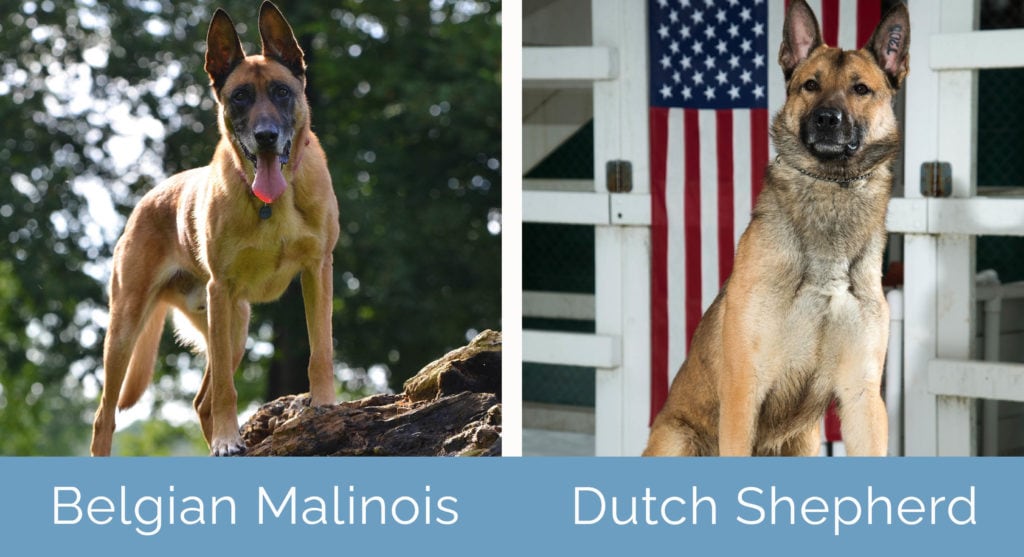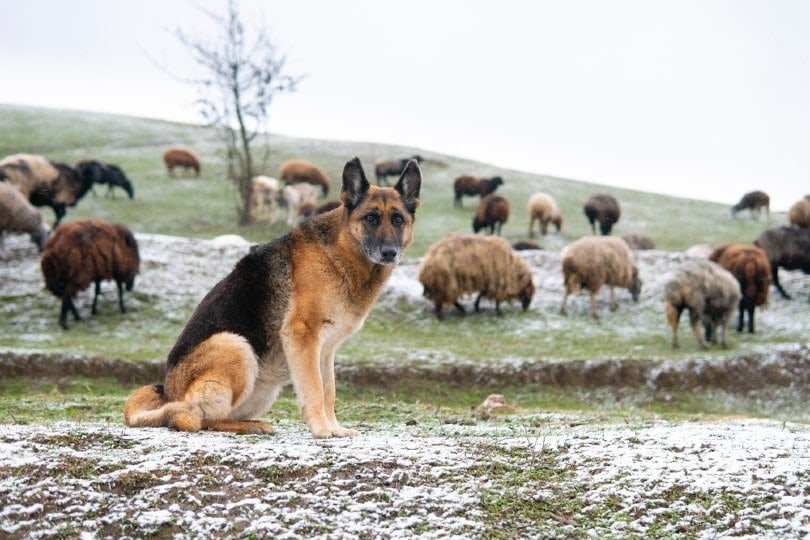Belgian Malinois vs. Dutch Shepherd: What Are the Differences?

Updated on
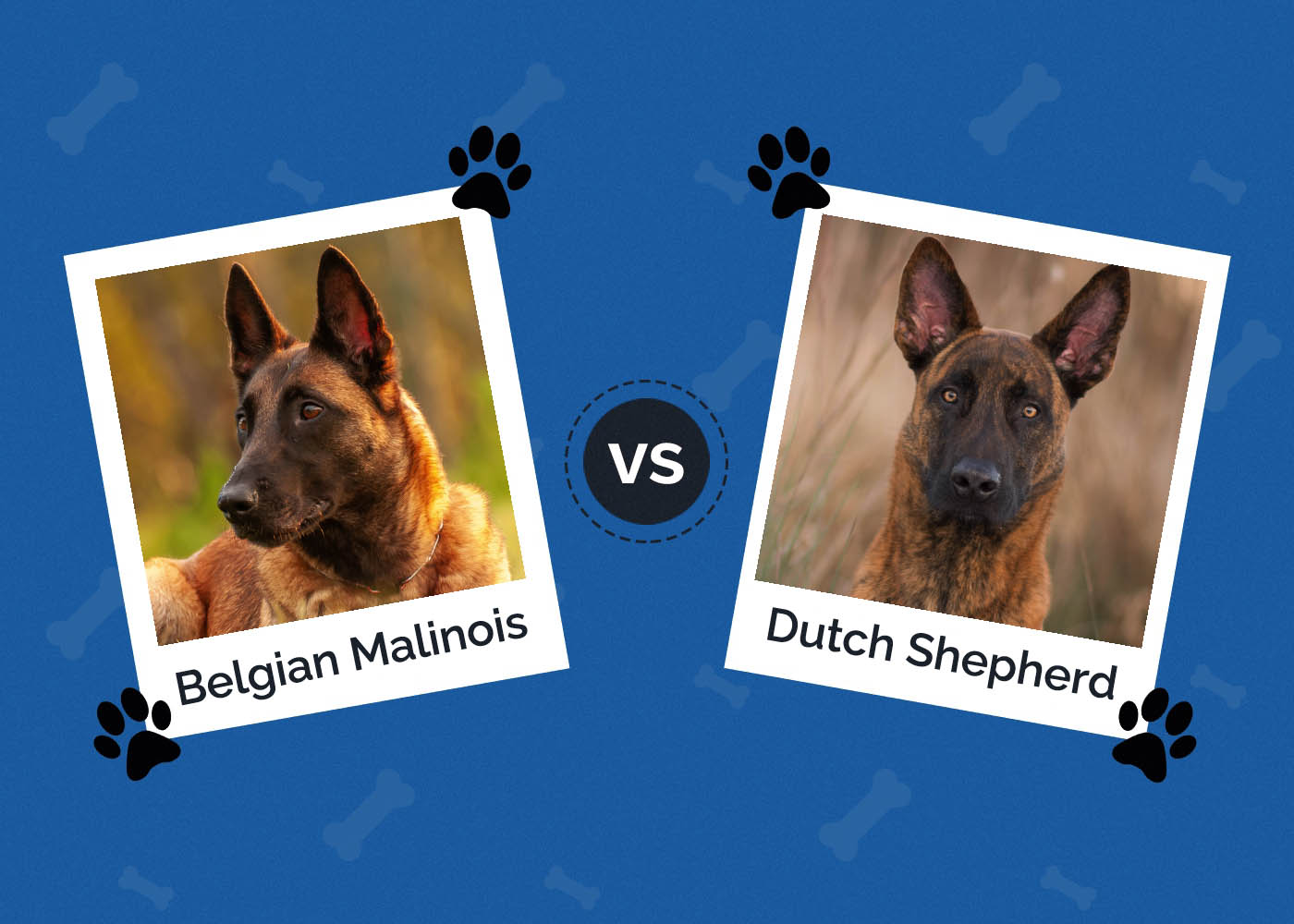
The Dutch Shepherd and the Belgian Malinois are so similar in appearance that they could be brothers. But thankfully, there are subtle differences between them that might sway you towards one breed over the other.
So, if you are stuck choosing between these two guys, this quick guide is a must-read. Here, we are going to go through the differences between their appearance and personality, as well as their health and other facts that you need to know.
Let’s get straight into the details.
Visual Differences
A Quick Overview
- Average Height (adult): 22 – 26 inches
- Average Weight (adult): 40 – 80 pounds
- Lifespan: 14 – 16 years
- Exercise: 2+ hours/day
- Grooming needs: Low
- Family-friendly: Yes
- Dog-friendly: Often
- Trainability: Excellent
- Temperament: Confident, smart, hardworking, loyal
- Average Height (adult): 21 ½ – 24 ½ inches
- Average Weight (adult): 40 – 75 pounds
- Lifespan: 11 – 14 years
- Exercise: 2+ hr/day
- Grooming needs: Low
- Family-friendly: Yes
- Dog-friendly: Often
- Trainability: Good
- Temperament: Intelligent, lively, athletic, independent
Visual Differences Described
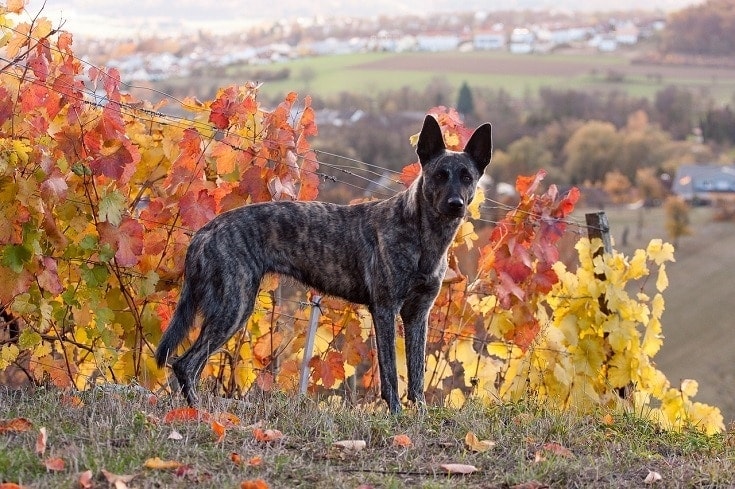
There’s no denying that these two guys look pretty similar. This is because they were both created by breeding local Shepherds that all looked very similar. And at some point, they were also both crossed with their more famous cousin, the German Shepherd.
But there are a few differences to help you tell them apart. The Dutch Shepherd has three coat types. One is the shorter coat, which makes him look very similar to the Belgian Malinois who also has a short coat.
The Dutch Shepherd also has the option of a medium-length coat that is known as a rough coat. So, if you prefer shaggier-looking dogs, the rough-coated Dutch Shepherd will be your best bet. And he also has the third option of the long coat, which is similar to the long-haired German Shepherd. Of course, with the rough and long-coated Dutch Shepherds, there is more grooming required.
The Dutch Shepherd only sports a brindle color, either with a silver or gold base. Whereas the Belgian Malinois enjoys different shades of red and brown with black facial features, similar to his German Shepherd cousin. Also, they both weigh almost the same, but the Belgian Malinois is slightly taller thanks to his leggier frame.
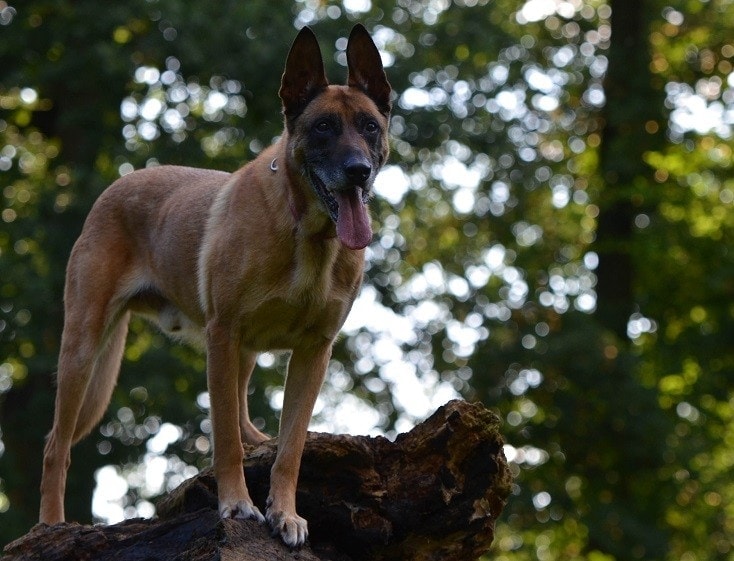
Personality Differences
The Belgian Malinois and Dutch Shepherd are both working dogs who were traditionally used as cattle herders and farmhands. And for this reason, there are a lot of similarities between them. They are both tirelessly hardworking, energetic, devoted, and intelligent.
One of the most significant differences between the two breeds is that the Dutch Shepherd is known for his independent personality. He’ll happily spend all day with you, but equally, he could also spend most of the day alone. He was regularly designated the task of taking out livestock every morning and returning them in the evening, all on his own.
On the other hand, the Belgian Malinois is one of the neediest dogs in the world, and he has to spend most of the day with his master. If you leave him alone for too long, he’ll get agitated, unhappy, and destructive. This is because the Belgian Malinois is a man-made breed, designed to work alongside and be totally dedicated to us.
The Belgian Malinois is known for his high prey drive too. So, he should always be kept on a leash in public because squirrels are not safe with this guy around. The Dutch Shepherd is not likely to be troubled by other animals unless they encroach on his space.

Training Differences
Because the Dutch Shepherd has an independent streak, that could quickly transform into a stubborn trait if allowed since he is more challenging to train than the Belgian Malinois. Those wanting to own a Dutch Shepherd should be experienced with dogs and not expect a fully obedient dog.
The Belgian Malinois is an intense dog personality that not everyone can handle. Equally, he is also super-intelligent, eager to please, and a dream to train. With the right training, he is a fully obedient dog that you can count on. This is why he is becoming a popular choice for law enforcement roles.
Health Differences
When breeding the Dutch Shepherd, three significant health concerns need to be screened for. These are:
- Hip and elbow dysplasia
- Thyroid (long-haired breed)
- Goniodysplasia (rough-hair breed)
The Belgian Malinois is screened for the following:
- Hip and elbow dysplasia
- Eye concerns
As you can see, the Belgian Malinois is prone to fewer health concerns, and they enjoy a longer lifespan too.

Who Is the Best Pick for Families?
Overall, both of these guys make a good choice for a family pet. But they need different types of families, so it all comes down to personal circumstances and preferences.
They are both great with children, and you can count on both of these guys to step in the way of danger to protect your little humans. The Dutch Shepherd, if socialized well, can co-exist happily alongside other pets too.
Because the Belgian Malinois has a high prey drive, he is not suited to a multi-pet household. If socialized well, other dogs are fine, but it’s not going to be fun for your cats, rabbits, and other small furry friends.
For those families who prefer more independent dogs or who will have to leave them for long parts of the day (within reason), the Dutch Shepherd would be the obvious choice. For those who prefer needier dogs, or those that can offer them the time and company, a Belgian Malinois might be the better option.
For those families who can handle an intense dog like the Belgian Malinois will be reward with complete devotion and an obedient dog. But, he needs constant attention and company, and not all families can give him this.
The Dutch Shepherd will happily spend time alone, and he often is the better option for busy families who haven’t got the time to spend 24 hours a day with him. To handle his stubbornness, a family needs to have previous dog experience and the understanding that he will never be fully obedient.
The Bottom Line
Overall, the Belgian Malinois and the Dutch Shepherd are both gorgeous canines, and they would make a fantastic addition to any family. But as with all dogs, it has to be the right family for them to be happy and healthy.
They have more similarities than differences, but the main differences outlined in this breed versus guide set these guys apart to make your decision much more straightforward, and they will help you to decide which one is better suited to you, your family, and your lifestyle.
Always be sure to research the breeds thoroughly, but if you find the right match in either of these guys, know that you are in for a long and happy life together.
Related Read:
- Belgian Malinois vs. Rottweiler: The Main Differences (With Pictures)
- 100+ Brindle Dog Names: Ideas for Your Striped & Multi-Tonal Pet
Featured Image Credit: (L) nordantin, Shutterstock | (R) Three Dogs photography, Shutterstock

